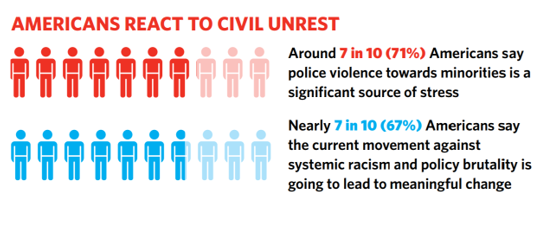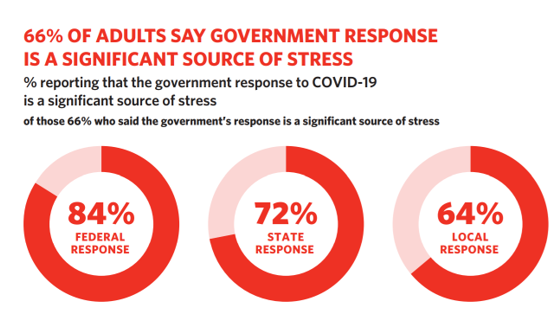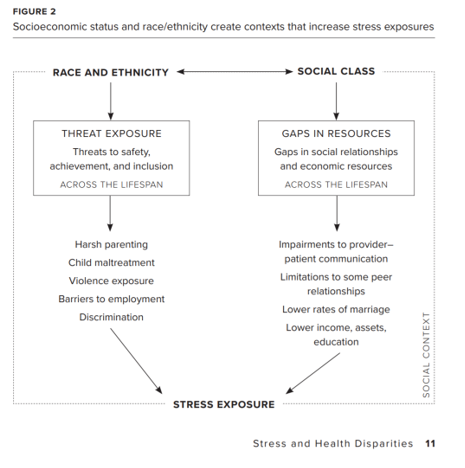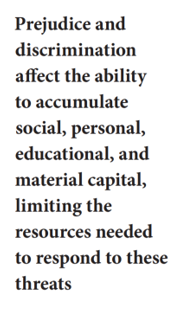“Now” is the lowest point in history that most Americans can remember: 7 in 10 people in the U.S. feel this way, up from 56% in 2018 and 2019.
 Furthermore, 4 in 5 people in the U.S. say the future of America is a significant source of stress, as discussed in Stress in the Time of COVID-19, Volume Two, a report covering a poll of U.S. adults sponsored by the American Psychological Association.
Furthermore, 4 in 5 people in the U.S. say the future of America is a significant source of stress, as discussed in Stress in the Time of COVID-19, Volume Two, a report covering a poll of U.S. adults sponsored by the American Psychological Association.
APA’s Stress in America research has been one of my annual go-to’s for better understanding U.S. residents through the lens of health consumers and, especially this year and in this study, health citizens.
The phenomenon of Stress-due-to-Corona was evident in Volume One of the APA study, covered here in Health Populi. In that wave of research, APA discovered that, “The COVID-19 pandemic has altered every aspect of American life, from health and work to education and exercise.”
What a difference three weeks makes: the last day of APA’s Wave 1 research for this study was May 4.
21 days later, George Floyd was killed by police in Minneapolis.
“This event set off weeks of protests over police violence and racism both aross the country and around the world,” APA’s report on Wave 2 research for this report begins.
APA polled 3,013 U.S. adults age 19 and over between May 21 and June 3, 2020. APA conducted a third poll about current civil unrest between June 9-11, 2020, to complement their original research plan based on the next pandemic emerging after COVID-19 and an economic recession: social unrest and civil rights re-awakening.
 Most Americans say police violence towards minorities is a significant source of stress. Seven in 10 Americans also agree the current movement against systemic racism and police brutality is going to lead to meaningful change, a hopeful sign to counter stress.
Most Americans say police violence towards minorities is a significant source of stress. Seven in 10 Americans also agree the current movement against systemic racism and police brutality is going to lead to meaningful change, a hopeful sign to counter stress.
Sadly, the APA survey found that in just one month, between May and June 2020, the percent of black Americans reporting discrimination is a significant source of stress grew from 42% in May to 55%. This was the highest proportion APA polled since 2018 when 46% of black adults reported discrimination was a significant stressor.
 Health Populi’s Hot Points: In June 2020, 4 in 5 Americans felt that the coronavirus pandemic was a significant source of stress.
Health Populi’s Hot Points: In June 2020, 4 in 5 Americans felt that the coronavirus pandemic was a significant source of stress.
Two in three people in the U.S. said the government’s response to COVID was a significant source of stress: in first place, the Federal government response (felt a significant stressor among 84% of U.S. adults), followed by States (72% of consumers), and local governments (64% of people feeling the stress).
The government plays a macro-role in largely determining the landscape for social determinants of health.
For racial and ethnic minorities, and people living in lower socioeconomic situations, stress is even a bigger risk than for white people and those of higher socioeconomic status.
APA published the report, Stress and Health Disparities, in 2017, and the learnings resonate even louder today than when the Association launched the paper.
 This flow chart from the paper illustrates the dynamic of threat exposures combined with resource gaps to mitigate risks.
This flow chart from the paper illustrates the dynamic of threat exposures combined with resource gaps to mitigate risks.
The World Health Organization identified stress as one of the top ten determinants of disparities in health in 2008.
APA synthesized evidence in this report that stressors related to social and economic advantage have downstream effects on psychological, neurobiological, physiological, and behavioral processes that shape health outcomes.
These disparities are especially rooted in social and economic resources, which government has the opportunity and choice to address through how it allocates resources. Among APA’s recommendations in the SDoH report to address stress and disparities are to,
- Support and conduct research to identify strategies that work to ameliorate stress and risk exposure
- Improve the capacity of psychology training programs to educate clinicians to identify and address the effects of inequality and injustice on individual and community health
- Partner with community-based organizations, schools and professional organizations to disseminate information on stress and impact on health disparities
- Advocate for and fund mental health services for people under stress, among other strategies.
 In this pandemic era, the U.S. is really dealing with several waves of dramatic challenges at once:
In this pandemic era, the U.S. is really dealing with several waves of dramatic challenges at once:
- The coronavirus crisis, a test of the nation’s health system and public health infrastructure
- The economic recession, a shock to the macroeconomy and peoples’ livelihoods during the Great Lockdown and mandates to shelter-in-place
- The social unrest, another shock to the country sparked by the death of George Floyd on May 25, 2020…introduced in the first sentence of the APA’s Stress in the Time of COVID-19 report.
This quote, pulled out of the 2017 APA report on stress and health disparities, sums up the root of the root problem we’re dealing with in the convergence of COVID-19, a declining economy for American workers, and growing realization among most people in the U.S. that we must now reallocate resources, and shift our hearts and minds, toward equity on many planes — for health, for social justice, and for fair wages.




 I'm in amazing company here with other #digitalhealth innovators, thinkers and doers. Thank you to Cristian Cortez Fernandez and Zallud for this recognition; I'm grateful.
I'm in amazing company here with other #digitalhealth innovators, thinkers and doers. Thank you to Cristian Cortez Fernandez and Zallud for this recognition; I'm grateful. Jane was named as a member of the AHIP 2024 Advisory Board, joining some valued colleagues to prepare for the challenges and opportunities facing health plans, systems, and other industry stakeholders.
Jane was named as a member of the AHIP 2024 Advisory Board, joining some valued colleagues to prepare for the challenges and opportunities facing health plans, systems, and other industry stakeholders.  Join Jane at AHIP's annual meeting in Las Vegas: I'll be speaking, moderating a panel, and providing thought leadership on health consumers and bolstering equity, empowerment, and self-care.
Join Jane at AHIP's annual meeting in Las Vegas: I'll be speaking, moderating a panel, and providing thought leadership on health consumers and bolstering equity, empowerment, and self-care.